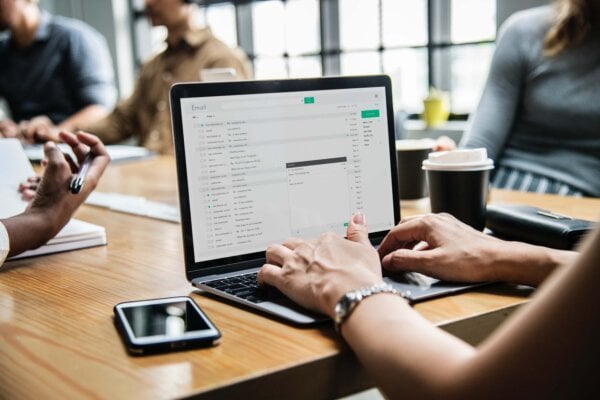
Bigger Profits Through Better Email – The Simple Way
Email marketing is an incredibly effective channel for driving conversions. Here we outline the foundation and components of an effective email strategy.
Here’s something incredible.
Email marketing consistently shows up at the top of the list for marketing tactic effectiveness, ROI and conversion rate.
Yet, for most companies, total spend on email marketing ranks towards the bottom of the budget.
Yes, it’s true that budget line items like social advertising, search engine marketing, and website design naturally require more dollars from the coffer. But there’s another reason – one we think reveals a gap savvy marketers will quickly recognize and leverage for explosive profits.
Here’s the thought: If the squeaky wheel gets the grease, then email runs too silently. It’s almost a backroom project. Set it and forget it. Send a blast here and there. That’s why most companies invest less time and money on email than just about any other marketing function.
That means if you’re willing to step out and give email the recognition it deserves, you can get better results at a lower cost than by any other tool on deck.
If you’re willing to step out and give email the recognition it deserves, you can get better results Share on XBefore you shout “Eureka” and dive in, though, take a look at the email fundamentals we’re listing here. Make sure your team is observing the basics.
Your results will depend on it.
Email Marketing Best Practices – How to Make Sure Your Foundation is Strong
We teach this point constantly: The fundamentals should make up the framework of your strategy. That applies across the board – whether you’re building an email campaign or learning to play backgammon. Cover the fundamentals before you worry about getting fancy.
In our experience we often find that basic principles are ignored or disregarded altogether. It’s all too easy to get off track and start majoring in the minors. Don’t let that happen to you. If the foundation is weak, the most elaborate building on the planet can topple.
Here are the components of email marketing and the checkpoints you’ll want to cover for each.
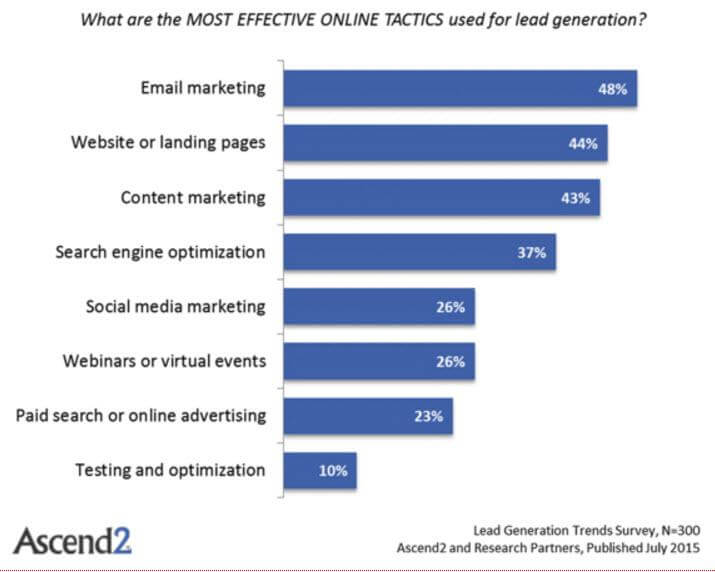
The Basic Components of Effective Email Marketing
Your email list
Email marketing begins and ends with the people who’ve entrusted you with their email addresses. There are few assets as valuable as your list of emails from the people and companies who’ve given you permission to deliver marketing messages to them via email. Your list is golden. Protect it and use it wisely.
Has your list been scrubbed lately?
List hygiene is essential. The fewer spam complaints, unsubscribes, and bounced messages you get from each email sent, the better you’ll be liked by the algorithms and platforms that monitor email performance. You want your messages to go to recipients’ inboxes, not their spam traps.
Email List Tips
- Quality beats quantity. Good lists outsell big lists time after time.
- Give prospects plenty of opportunity to get on your list. Give them something special for trusting you, then make them glad they signed up.
- Make every email you send valuable to the recipient. For most businesses, making it easy for them to share that message with others is an excellent step to recruiting evangelists and ambassadors.
Checkpoint: Make sure your email marketing manager is fastidious about keeping your list clean and bot-free. Check to be sure undeliverable addresses are corrected or removed and that there’s a rule in place for removing emails of those who don’t open your messages (after a save or re-engagement plan fails). Email addresses are valuable. We know how tough it can be to cut them loose, but a clean list is a high-performing list… and a dead list is not.
Basic hygiene: Email List Hygiene Best Practices to Curb Unsubscribe Rates
More hygiene: Tips for Proper Email List Hygiene
Bot trapping: Spam, Spam Bots, and Double Opt-in Emails Lists
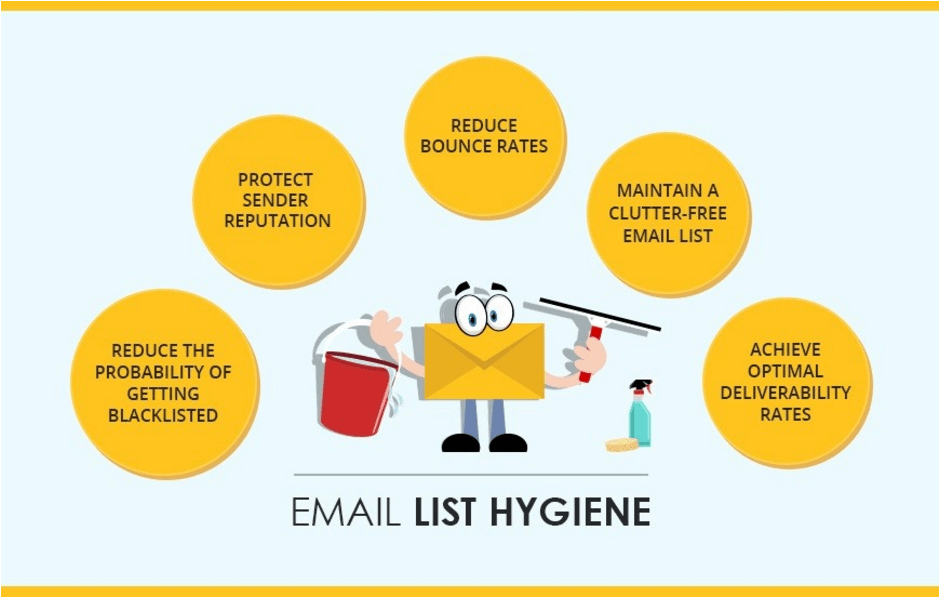
Your email messaging strategy
Email is a lot like mail from the USPS. You open the box, sort through what’s there, toss the spam in the trash, and save whatever looks important or interesting. If a letter looks really important or interesting, you may open it immediately.
Once you’ve sanitized your list to get rid of fakes, non-prospects, and non-responders, you can be fairly certain that most of the addresses left go to real people with real problems you can help solve. The next question: How are you going to do that? How can you be of real value to your customers or clients? That is the most important question an email marketer can ask.
A Guide to Email Marketing For Ecommerce Businesses
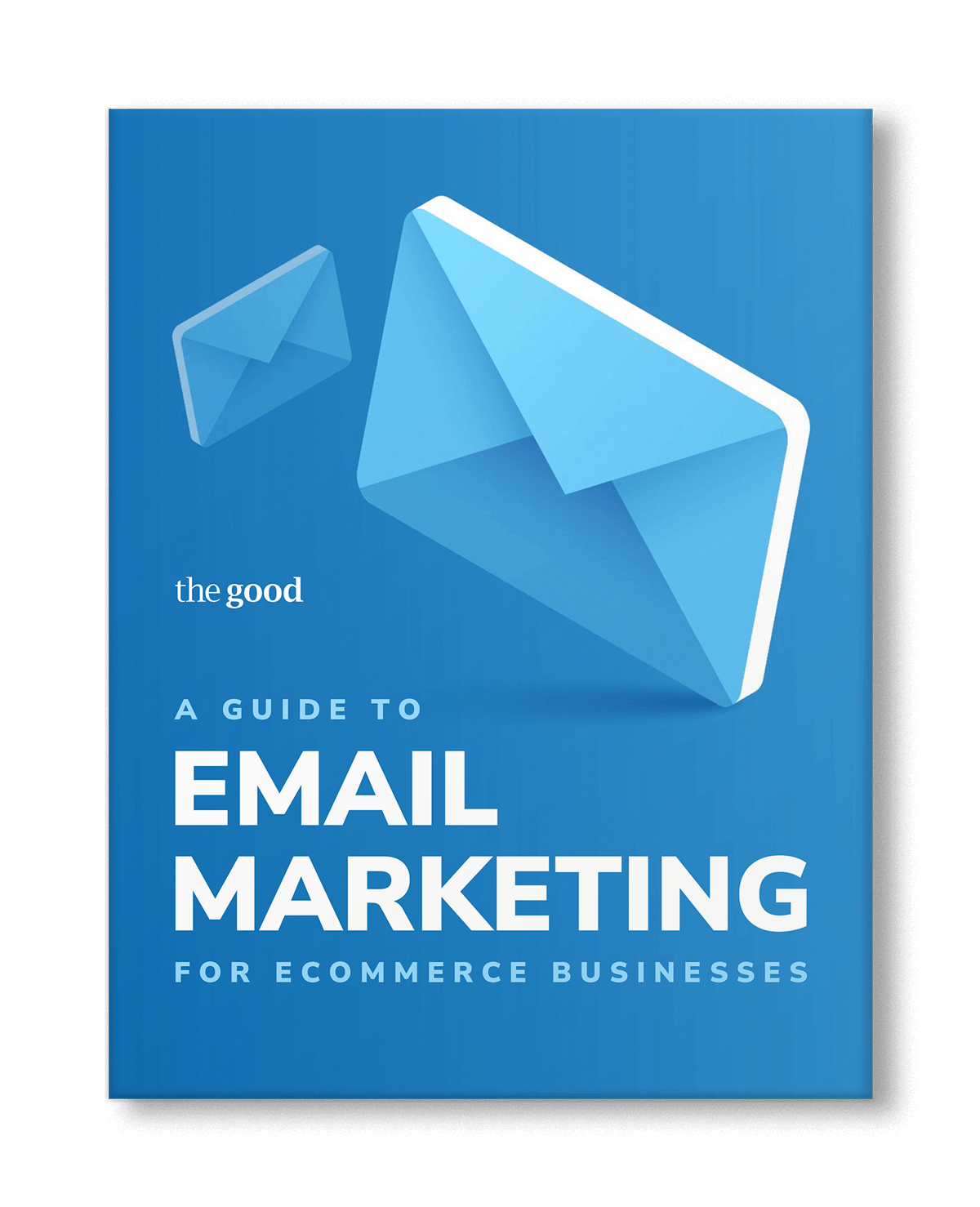
What will your email marketing messages include?
Ask any marketing copywriter to name the most important part of an email, and you’re likely to hear one response more than any other: The subject line.
Undoubtedly, the content of the message doesn’t matter if the mail doesn’t get opened, and the subject line is instrumental in getting that open.
There’s one thing more important, though: Your relationship with the recipient.
Grandmothers opens every single email from their grandchildren, and most will do just about anything those emails ask.
Why?
It’s all about relationship.
The tighter your relationship with the people on your mailing list, the more success you’ll have with that list.
How do you build relationship?
You do it the same way you build any other relationship. You make sure factors like this are in place:
- Be honest
- Be helpful
- Be trustworthy
- Listen more than you speak
- Keep the best interest of the other in mind
You may change from your “civilian clothes” to your “business clothes,” but be sure the clothes are all that change. Treat those on your mailing list the way you treat your friends. Be kind and considerate. Make them glad they know you.
Email Content Tips
- Make your subject line intriguing, but make sure it accurately describes the content. You want recipients to open emails, but you don’t want them to be disappointed after they do. When your messages provide real value, your subject lines need only draw attention to that value.
- Use personalization at every opportunity. It’s much better to use your recipients’ names than to use a generic term to address them. The more you know about those on your list, the better able you are to not just get the name right, but to get the need right.
- Don’t get fancy, get simple. Most emails are now opened via a mobile device. Keep it short and sweet. Use clickable links to direct attention to a website or landing page for those who want more information. Chunk up the journey. Don’t force-feed it all in one email.
Checkpoint: Are your email campaigns mobile-friendly? Most emails are now opened via a mobile device. That means you want to avoid a heavy image load, make CTAs and links absolutely visible/clickable, and make sure your messages are mobile-responsive. Don’t assume. Include your own address on your mailing list, open up your sent mail on your smartphone, and have a look. Do that often.
Mobile friendly email: 7 Simple Hacks to Create Traffic-Driving Mobile Friendly Emails
Personalization: Email Marketing Personalization 101
Deliverability: The Ultimate Guide To Email Deliverability
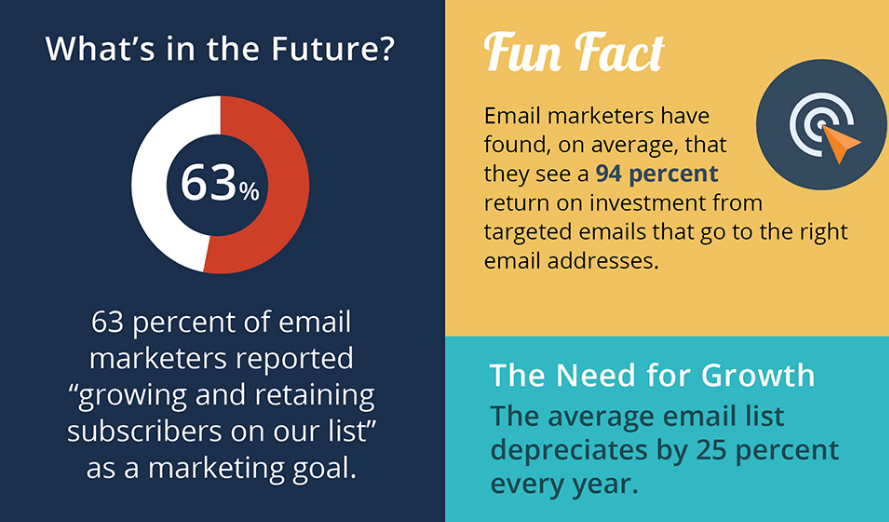
Your email follow-up strategy
Businesses often view their email marketing as a series of “blasts.” Many see emails as sales announcements or advertisements – just another way to get your latest “deal” in front of the masses. That’s a sure way to miss out on real email marketing effectiveness.
Do you remember what we said in the introduction – that email marketing may be one of the most overlooked, but valuable, marketing tactics you can find? That’s what we’re talking about here. Your email strategy should not be to occasionally “shout out” to your list. Rather, it should be a determined and well thought out effort to encourage and develop communication.
Email Follow-up Tips
- Special announcements are fine, but the bulk of your email marketing strategy should be aimed at developing your relationship with subscribers. Get them to interact.
- Develop and initiate follow-up email sequences for onboarding new subscribers, for providing shipping and fulfillment information after an order, for carrying on the communication with those who attend special events – any touchpoint can be a reason for special emails. You want your customers to feel special, yes? (Because they are.)
- Keep collecting information about the members of your list (ask them, listen to them, observe their behavior) and use that knowledge to tag attributes for list segmentation.
- Don’t worry so much about emailing your list too often. Most businesses mail their list too infrequently. The more they’re used to getting valuable content from you, the closer you’ll be to the front of the line when they need your products or services.
- Design automated email campaigns to keep the ball rolling. You don’t have to get complicated to begin, but you do need to plan out a sequence, use it, and monitor it. Once you’re comfortable with basic campaigns, you can get more elaborate… but much can be done with relatively simple progressions.
- Test, test, test. Always be testing and always be learning.
Checkpoint: What is your email marketing strategy? Does it extend beyond occasional blasts to your list? How are you using autoresponder capabilities in your campaigns? How are you monitoring results? You don’t have to do it all yourself, but you do need to know that it’s happening and how it’s happening.
List segmentation: How to Segment Your Email List (a discussion on Inbound.org)
Follow-up example: How to Structure a Follow-up Email Series
Automated campaigns: 13 Email Workflows For Marketing Automation
Every piece must be in place
Your list, your messaging, your follow-ups. Those are the fundamental components of an effective email strategy.
Within that framework are the building blocks: List sanitation, your content strategy, your campaign automation. Every piece is critical. Every piece leads prospects along the journey from interest to purchase. Every piece must be in place.
Your list, your messaging, your follow-ups. Those are the fundamental components of an effective email strategy. Share on XWe’ll say it one more time: If you’re not taking email marketing seriously right now, if you haven’t covered the checkpoints we’ve outlined above, then email marketing may be a gold mine waiting to be tapped.
Don’t assume your team has the basics covered. Go look. Go ask. Get on your own email list and make sure the mobile effect is powerful. Use the tools and systems you already have set up, but use them better.
That’s the secret to explosive email marketing. Keep it simple.
Resources From The Good:
- How to Write the Perfect Email Signup Text
- Post-Purchase Emails: A Powerful Way to Hack Growth
- How to Build a More Valuable Email List
- How to Find Stuck Points™ – Score Your Site
Enjoying this article?
Subscribe to our newsletter, Good Question, to get insights like this sent straight to your inbox every week.

About the Author
Jon MacDonald
Jon MacDonald is founder and President of The Good, a digital experience optimization firm that has achieved results for some of the largest companies including Adobe, Nike, Xerox, Verizon, Intel and more. Jon regularly contributes to publications like Entrepreneur and Inc.